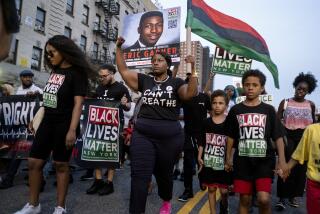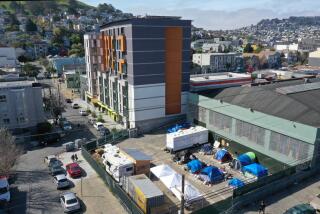For defibrillators to save lives, people have to use them
- Share via
Chances are, if you’re out and about, you’ll pass by an automated external defibrillator, or AED.
The machines, which check the heart’s rhythm and can deliver a shock to restore the heartbeat to normal, are scattered about public places so that bystanders can deliver a jump-start to people experiencing sudden cardiac arrest, keeping the heart going until the patient can make it to a medical facility for treatment.
But two studies presented Friday at the annual meeting of the Society for Academic Emergency Medicine in Chicago demonstrate a key limitation of the machines: For defibrillators to save lives, people have to use them, and use them in time. All too often they don’t.
First, a team from the University of Pennsylvania’s Perelman School of Medicine identified the locations where 3,483 people in the Philadelphia area had experienced cardiac arrests and then checked to see whether defibrillators were available nearby. They found that only 7% of the cardiac arrests occurred within 200 feet of an AED (about a two-minute walk, round trip — which the researchers defined as “close proximity.”) Only 10% of cases were within four minutes of the defibrillator. Only 21% were within six minutes.
The longer it takes to get a shock delivered to a patient with cardiac arrest, the worse that person’s chances of survival will be, the researchers said, noting in a statement that a delay of six minutes or more leaves a very low chance of survival.
In the second study, another group of researchers at the same medical school looked at records collected by the Philadelphia fire department to analyze racial disparities in pre-hospital cardiac care. The team reviewed 4,909 out-of-hospital cases of cardiac arrest that occurred between January 2008 and February 2012. Black patients were less likely to be treated with a defibrillator by a bystander or first responder than whites. Among black people in the study, 27.3% received a shock from an AED; among whites, 34.4% did.
People were even less likely to receive CPR — 5.6% of blacks versus 7.5% of whites.
In a statement released by the university, the researchers said they would investigate whether socioeconomic factors or neighborhood characteristics played a role in the observed disparity. Such work, they said, might aid development of targeted CPR and AED training.
“If CPR and AEDs were employed for every cardiac arrest, hundreds of thousands of lives would be saved annually, in the U.S. alone,” said Dr. Roger Band, senior author of the study and a professor of emergency medicine at Penn, in the statement. “Use of these basic lifesaving tools is far too low across all patient populations, and even small increases in their use would translate into very significant increases in survival.”







